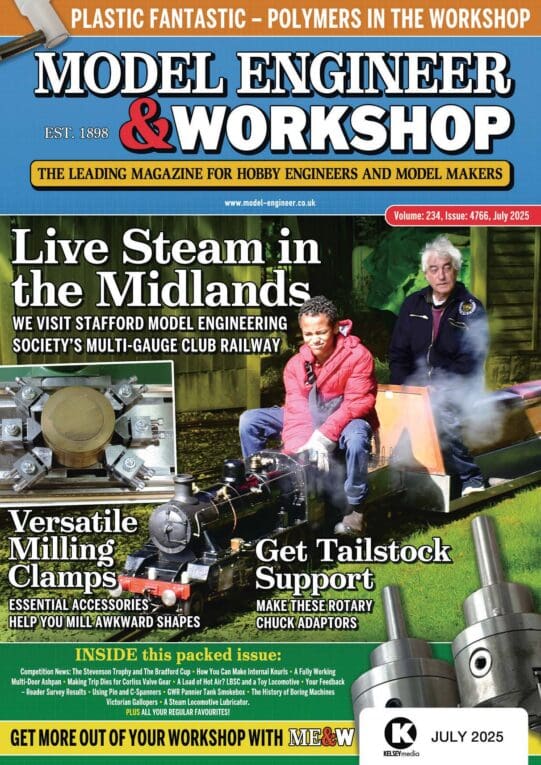Thank you but it still doesn’t really answer the problem. I have, largely, some idea how my engine should go together but am limited by the way it has to match the exterior evidence, and that fact that I cannot use 3D CAD well enough to design anything in it.
By way of interest, Jason, how long did it take you to produce those images? That would have taken me many, many hours with many big errors.
It would take me an evening (3 to 4 hours) just to model those cranked chassis channels, as I found months ago when I tried it, from measuring the real thing. The cylinders, probably two or three evenings with all those details. The boiler is two intersecting cylinders – if I ever managed to model that in 3D, I forget how.
The only way to plot the outlines of their cladding sheets will be by measurements from the shell itself, using a wrapped haberdashery tape or calibrated disc for angular divisions, and testing with cardboard, without a computer in sight. No manual development plotting or CAD methods I do not know; although I have a technical-drawing text-book that gives the pencil and paper method. (Long time since my A-Level Tech. Drg. lessons…)
The whole point of me trying to design the remaining areas in CAD is to save precious workshop time, electricity and materials.
I have had to alter or re-make a lot of parts already.
The ashpan is V3.1. Steam turret looks ‘orrible but will do for now. Cosmetic tidying can wait.
Exhaust steam pipe: takes a tortuous route that may need changing, looks grim, and I have lost its connection to the blast-pipe.
Rear axle sprocket – had to be replaced. Front stub-axles: slightly too short, limiting the turning-circle.
Rear axle main shaft: slightly too long for the model – and for putting between centres on the lathe. I’d made it on a bigger machine.
Two pairs of connecting-rods: one pair perhaps too long, the other certainly too short. The long ones, turned from nine-inch lengths of 1.5″ d. steel, might be useable but contain symmetry errors hard to correct satisfactorily.
Cylinder block: needs replacing completely.
Crankshaft: output end too short, so will have to find a way round that.
.
Nick –
It’s not really the engineering that is the hard part because I have plenty of “full-size” steam-era and model-engineering reference books to help me, and a set of miniature locomotive drawings to crib the valve-gear from. It’s trying to use CAD that makes it all so difficult.
.
Thank you the tip about file type, John.
That might explain why using DWG to move an Alibre drawing to TurboCAD was simpler than vice-versa. I think TurboCAD works similarly to AutoCAD. (Are they by the same company?)
 JasonB.
JasonB.








